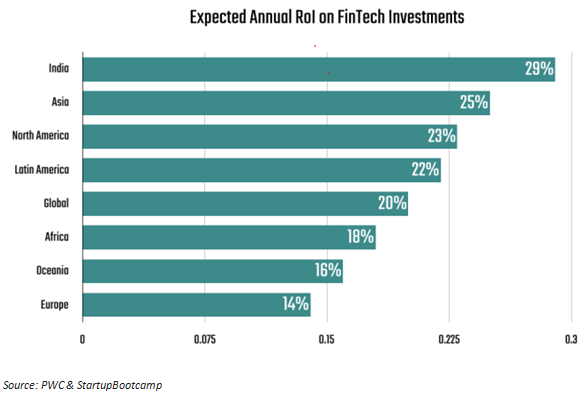
Like CAGR, internal rate of return, or IRR, is a metric used by commercial real estate investors to calculate the profitability of an investment. Unlike CAGR, the IRR calculation relies on cash inflows and cash outflows over the holding period to provide the investor with a gauge of profitability. Estimates of cash flows over the holding period are typically found in the proforma financial statements for the investment property. IRR is uniform for investments of varying types and, as such, IRR can be used to rank multiple prospective projects on a relatively even basis.
- CAGR, short for “Compound Annual Growth Rate”, is the average rate of growth of an asset over a given period of time.
- We will examine each of these in depth, explain how to calculate them, and discuss when to use them.
- There are many ways to analyze the profitability and investment returns of a project or property.
- Using the same methodology discussed earlier, the IRR in this scenario comes to 27.41%, much higher than the CAGR we had calculated.
- IRR is a simplification of XIRR in which only periodic cash flows are allowed.
This is true of stock market investments, mutual funds, certificates of deposit, and many other investment products. Before we start discussing these advanced topics in more detail, it is useful to consider why we need them in the first place. The difference is on account of the assumption regarding the reinvestment of interim cash flows.
Tracking business performance and forecasting revenue growth
The most important distinction between CAGR and IRR is that CAGR is straightforward enough that it can be calculated by hand. In contrast, more complicated investments and projects, or those that have many different cash inflows and outflows, are best evaluated using IRR. To back into the IRR rate, a financial calculator, Excel, or portfolio accounting system is ideal. CAGR provides accurate forecasts on the annualized rate of growth for investments or specific metrics. To get accurate results, it’s better to use extended periods when calculating compound annual growth rates.
Many of us have trouble understanding how the growth of volatile instruments like equity, bonds gold or even real estate can be quantified. We come across many terms like CAGR, IRR and XIRR in this context. The only way I can calculate risk premium is by using the same compounding formula used for the fixed income product to the volatile security. Many of us have trouble understanding how the growth of volatile instruments like equity, bonds gold or even real estate can be quantified.

See here to understand how XIRR for a mutual fund SIP is calculated. Investments are entered as a negative number (-12,000 in this case) and the final maturity value is positive. Moreover, if the risk for the investment with higher returns is significantly higher, the one with lower returns may become more appealing. As you can see, it’s not just about CAGR values, but also the unique circumstances that surround each one. There are plenty of investment vehicles to choose from as an investor.
How to Calculate Return on Investment (ROI)
This will help the investor to feel confident that they are choosing to allocate their capital in a way that meets their financial objectives and fits their risk profile. Individual accredited investors may decide that investing in a private equity firm is the best way for them to gain exposure to the commercial real estate asset class. These investors will probably look at several potential private equity sponsors before deciding on one to invest in. The research that the individual does at this stage is known as due diligence, and understanding the past performance of the firm is an important part of the process.

By comparing the CAGR of specific business activities with those of similar organizations, you can determine your company’s weaknesses and strengths. Our new set of developer-friendly subscription billing APIs with feature enhancements and functionality improvements focused on helping you accelerate your growth and streamline your operations. For all three methods, the higher the rate, the more desirable the investment.
HOW DO IRR AND CAGR GROW MONEY?
So one will have to take into account the date of investments and receipts along with the amounts involved. However, the maturity value is identical to the above case in which annual cagr vs irr returns were fixed at 20%. I expanded it explicitly for us to recognize that when the annual returns fluctuate, we need to plug in each year’s return in the above expression.

Due to volatility in the market, the annual rate of growth will vary in each financial period. For instance, your growth rate for the first year may be 15% only for it to fall to 8% in the next year. With the exception of bonds that have a fixed return until maturity, the growth rate of all other investments will vary each year.
The Formula for Calculating the Internal Rate of Return
This is because the latter investment is performing below industry level while the former is well above the industry standard. Average returns are commonly found using average ROI, CAGR, or IRR. An applied statistician, data analyst, and optimizer by calling, Georgi has expertise in web analytics, statistics, design of experiments, and business risk management. He covers a variety of topics where mathematical models and statistics are useful. Georgi is also the author of “Statistical Methods in Online A/B Testing”. At the end of every tier (except the last one), if we calculate the IRR, it is equal to the applied APY rate and offers us a great sanity check thus ensuring a controlled distribution at every stage.
Compound Annual Growth Rate (CAGR) Formula and Calculation – Investopedia
Compound Annual Growth Rate (CAGR) Formula and Calculation.
Posted: Sun, 26 Mar 2017 03:36:57 GMT [source]
However, if you increase the number of years to five, the disruption in the second year will only make a minor dent in the formula’s accuracy. So, if you withdraw or add funds to the investment during the forecasting period, the CAGR calculations will not be accurate. Increasing your investment will inflate the CAGR while withdrawing funds will reduce it. In turn, this allows you to predict overall business performance and make revenue projections more accurately. In all this, XIRR calculations take into account the time preference of investors.
Investors should think of IRR as the interest rate earned on each dollar invested over the holding period. In technical terms, the IRR is the discount rate that results from using the estimated cashflows to calculate a net present value (NPV) equal to zero. For more information on net present value calculations, see our article on this topic. The important thing to know is that a higher IRR indicates a more profitable investment. There is never a continuously smooth market cycle that experiences linear growth.
Disadvantages of IRR
If the IRR is greater than or equal to the cost of capital, the company would accept the project as a good investment. (That is, of course, assuming this is the sole basis for the decision. We have been taught that one of the problems with using the IRR is the assumption that cash flows received during the life of the project are reinvested at the IRR rate – an assumption which is not realistic. In fact, many investment firms declare their performance in terms of IRR which may not truly reflect the actual performance of the fund. Compound annual growth rate, annualized internal rate of return and the annualized extended internal rate of return can all be viewed as simplifications of XIRR tailored to specific scenarios.
Patria Investments announces divestment of Delly’s to CVC Capital … – CVC Capital Partners
Patria Investments announces divestment of Delly’s to CVC Capital ….
Posted: Wed, 21 Jun 2023 07:00:00 GMT [source]
This logic is factored in a net present value calculation and also IRR, given that the latter is simply the return rate at which the NPV of an investment equals zero. While this may work for simple textbook scenarios, most real-world applications involve multiple cash flows. Both CAGR and internal rate of return (IRR) measure the performance of an investment. However, CAGR does so for a certain period of time while IRR is more flexible.
This is an important tool for any investor to understand because it is the primary way that investors and financial analysts break down a total return for a holding period into an annual rate. Essentially, it allows an investor to see their average returns over a period of time. There are many ways to analyze the profitability and investment returns of a project or property. In commercial real estate, two of the most common metrics that investors use to measure performance are Compound Annual Growth Rate (“CAGR”) and Internal Rate of Return (“IRR”). We will examine each of these in depth, explain how to calculate them, and discuss when to use them. Investors must know how to measure the returns on an investment in order to determine whether the investment is a success or failure.
- See here to understand how XIRR for a mutual fund SIP is calculated.
- It only serves as a method of forecasting the rate at which an investment may grow if it maintains the same growth rate over the entire forecast period.
- However, if the industry CAGRs for both are 10% and 30%, respectively, the outlook will change.
- Another way to understand IRR is that it is the compound annual growth rate adjusted for the cash flows, accounting for their amount, direction, and timing.
- Absolute and relative return are useful if the time to return of the investments of interest is exactly the same, and there is just one outflow (the initial investment) and one inflow at the end.
CAGR is the average annual return of an investment over a specified period of time. Since it’s possible for a very small investment to have a very high rate of return, investors and managers sometimes choose a lower percentage return but higher absolute dollar value opportunity. In capital budgeting, senior leaders like to know the estimated return on such investments. The internal rate of return is one method that allows them to compare and rank projects based on their projected yield. The investment with the highest internal rate of return is usually preferred. Once the internal rate of return is determined, it is typically compared to a company’s hurdle rate or cost of capital.